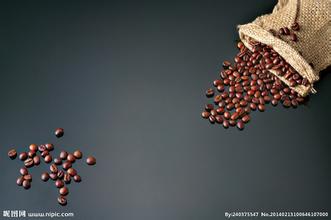Coffee bean density high altitude which producing countries grow coffee at the highest altitude
Introduction of coffee producing countries
Classification according to the altitude of the coffee producing area
The main reason for this classification standard is that the quality of coffee produced at high altitude is generally higher than that at low altitude, because high altitude and low temperature, slow coffee production is conducive to the accumulation of good substances. And the raw beans with high maturity have good expansibility when baking, which is beneficial to baking, and the quality is more stable.
At present, the coffee producers using this classification standard are Central and South American countries such as Guatemala, Mexico, Honduras, El Salvador and so on. Take Guatemala as an example, the most advanced coffee is called SHB (short for Strictly Hard Bean) very hard beans, which is grown at an altitude above 1350m, followed by HB (Hard Bean) hard beans, planted at 1200m--1400m above sea level, SH (Semi Hard Bean) slightly hard beans, EPW (Extra Prime Washed) super quality water washed beans, PW (Prime Washed) high quality water washed beans, EGW (Extra Good Washed) special quality water washed beans, GW (Good Washed) good quality water washed beans, respectively, at an altitude of 1200m. About 1000m, 800m, 600m Murray 800m and less than 600m.
Second, grading according to the screen
The way of sieve grading is to grade according to the size of raw coffee beans. Raw beans are graded by determining the size of the beans through a holed iron plate sieve. The size of the hole in the screen is 1x64 inches (less than 0.4mm), so the size of the screen indicates that there are several 1x64 inches. For example, the size of screen 17 is 17x64 inches, which is about 6.75mm, so the larger the number of the screen, the bigger the particles of raw coffee beans.
The reason for this grading is that beans with large grains sell better and are more likely to produce rich and varied flavors than small ones. But this is not to say that beans with large grains are of better quality than beans with small grains. Ethiopian coffee beans are generally narrow and small, but their taste is the most unforgettable and favorite, including Yunnan's small seed coffee. it is also highly appraised by the international market.
Kenya is one of the most representative countries rated by sieve, along with Tanzania and Colombia (some countries use more than one classification, and the examples given here are representative, mainly in this way). Kenya's most advanced AA++ requires sieves larger than 18, that is, beans larger than 7.15 mm. Kenya beans are graded carefully, including AA++,AA+,AA,AB and so on. Colombia's classification is simpler, divided into Supremo (selected) and Excelso (upper) according to bean size. 80% of the raw beans of the selected grade need to use a sieve of more than 17, and 80% of the raw beans of the upper grade need a sieve of 14 and more than 16, and a maximum of 11% of the beans with sieve 16 are allowed to be mixed with 14 sieve beans.

Important Notice :
前街咖啡 FrontStreet Coffee has moved to new addredd:
FrontStreet Coffee Address: 315,Donghua East Road,GuangZhou
Tel:020 38364473
- Prev

Introduction to the three continents of coffee production
Coffee producing countries introduce the degree of suitable roasting: Full city/Espresso/Dark medium and deep roasting is the most suitable for Peruvian coffee beans, too shallow to show flavor and sweetness. Peruvian coffee used to be uncommon internationally, and it is generally believed that its handling process is hasty, so the evaluation is poor, which is the result of a previous state monopoly. In fact, Peruvian coffee has good growth conditions, and
- Next

How to use inhaled caffeine Energy Bar Eagle Coffee Energy Bar
Coffee introduction the main difference between these two caffeine products is the way they are ingested. Inhaling caffeine bypasses the digestive system and allows caffeine to enter the bloodstream directly, which is faster and controllable. It can take effect immediately after inhalation. You can stop when you feel uncomfortable or excessive. The product is sugar-free and nicotine-free and can avoid addiction. The editorial department decided to experience it and felt it worked.
Related
- Guji coffee producing area of Guji, Ethiopia: Humbela, Shakiso, Wulaga
- What is the most expensive variety of Qiloso in BOP multi-variety group?
- How to store the coffee beans bought home?
- Why are Yemeni coffee beans so rare now?
- Ethiopian Sidamo all Red Fruit Sun Sun Santa Vini Coffee beans
- SOE is mostly sour? What does it mean? Is it a single bean? what's the difference between it and Italian blending?
- Is Italian coffee beans suitable for making hand-brewed coffee?
- How to choose coffee beans when making cold coffee? What kind of coffee beans are suitable for making cold coffee?
- Just entered the pit to make coffee, what kind of coffee beans should be chosen?
- Can only Japan buy real Blue Mountain Coffee? What are authentic Jamaican Blue Mountain coffee beans?

